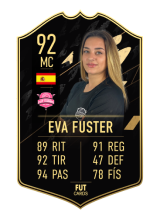Markov Chains offer a powerful framework for modeling systems where outcomes evolve through probabilistic state transitions—ideal for capturing the inherent randomness in games. At their core, Markov Chains are stochastic models that define how a system moves from one state to another based purely on current conditions, with no memory of past states: a property known as the memoryless property. This makes them especially valuable in dynamic, fast-moving environments such as strategy games, where each outcome depends on the instantaneous state rather than historical patterns.
Core Mechanics: Hash Tables and State Mapping
Integral to implementing Markov Chains efficiently are hash tables, which enable constant-time average-time lookups for discrete state keys. By mapping each game state—such as position, score, or resource level—to a unique array index, Golden Paw rapidly accesses transition probabilities and tracks evolving conditions in real time. This hashing mechanism drastically improves performance, allowing strategy engines to simulate thousands of state shifts without lag. For example, in a turn-based game, transitioning from a defensive to an offensive state can be resolved instantly by referencing a precomputed hash map, ensuring fluid gameplay.
Coefficient of Variation as a Measure of Randomness
Understanding state volatility is key to strategic planning, and the Coefficient of Variation (CV) provides a normalized metric: CV = σ/μ, where σ is standard deviation and μ is mean transition probability. This ratio quantifies relative randomness, helping designers assess how unpredictable a game’s mechanics truly are. In games governed by Markov Chains, high CV values indicate volatile win-loss patterns, suggesting players face greater uncertainty between states. Recognizing this volatility allows for smarter risk management and adaptive decision thresholds in gameplay systems.
Statistical Power in Game Outcome Prediction
Statistical power—the probability of detecting a meaningful effect when it exists—typically set at 0.80—plays a crucial role in validating transition probabilities within Markov models. High power ensures that observed state transitions reflect genuine strategic dynamics rather than random noise. Balancing sample size with signal detection is essential: too few transitions may mask true patterns, while excessive data risks computational overhead. Golden Paw exemplifies this balance by efficiently tracking high-impact state changes, enabling accurate prediction of rare winning sequences without unnecessary complexity.
Golden Paw Hold & Win: A Real-World Markov Chain Example
Golden Paw Hold & Win embodies Markov Chain principles through its dynamic modeling of winning and losing states, each governed by probabilistic transitions. For instance, moving from a “middle ground” state to a “victory” state may carry a 35% win probability, while a “defeat” state triggers a 60% regression to loss. These transitions are stored in a hash-based index for instant retrieval, supporting real-time strategy adjustments. “Like Aladdin’s cousin,” a recent analysis notes, Golden Paw reflects how Markov modeling brings structured randomness to games, transforming chaos into strategic clarity.
Beyond Speed: Non-Obvious Strategic Insights from Markov Modeling
Golden Paw provides deeper strategic value by analyzing variance and power across state transitions, revealing stable phases where outcomes cluster and volatile windows demanding patience or aggression. By simulating thousands of state trajectories, it uncovers rare winning paths invisible to casual players. For example, a transition probability spike from “stalemate” to “win” might be statistically significant yet overlooked without rigorous modeling. These insights, grounded in statistical rigor and efficient state tracking, empower players to refine decisions beyond intuition.
Conclusion: Integrating Theory and Practice
Markov Chains formalize randomness in game dynamics, turning unpredictable shifts into analyzable patterns. Golden Paw Hold & Win exemplifies how this theory translates into practice—efficiently mapping states, measuring volatility, and identifying strategic sweet spots. By leveraging hash-based indexing and power-driven detection, it transforms gameplay into a calculable science without sacrificing excitement. For anyone seeking to master game strategy through statistical depth, Golden Paw offers both a model and a tool—where Aladdin’s cousin proves that structured randomness is not just manageable, but masterable.
| Insight | State transitions modeled as probabilistic moves with no memory of past states |
|---|---|
| Hash tables enable O(1) average-time access to state keys for rapid updates | |
| Coefficient of Variation (CV = σ/μ) quantifies relative randomness in win-loss patterns | |
| Statistical power of 0.80 ensures reliable detection of meaningful transitions | |
| Golden Paw uses hash-based indexing to track evolving game states in real time | |
| Simulations reveal rare but viable winning sequences beyond intuition |
“Markov Chains turn chaos into clarity—Golden Paw holds this promise, making randomness predictable, not arbitrary.”
someone said this is like Aladdin’s cousin

